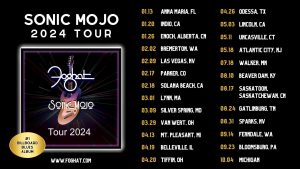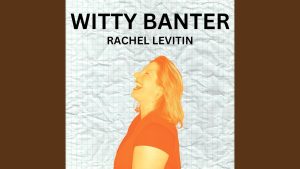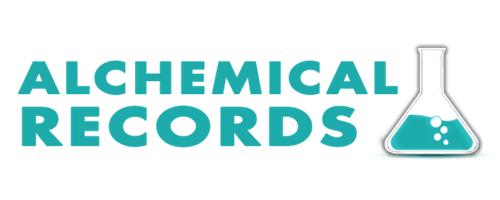
By Cynthia Gross
This Alchemical Records article is read by the author to provide a multimedia experience for our audience while increasing the accessibility of our content to persons with hearing loss, low vision, dyslexia, physical or motor disabilities, or are on the autism spectrum.
Bronx, New York-born, D.C.-based violinist, producer, engineer, and actor Marvillous Beats is no stranger to success. He’s produced songs for Interscope Records artist Tory Lanez, performed live with Wale, appeared with GoldLink on NPR Tiny Desk, been featured in The Washington Post, Blavity, Essence, and more. After only a few minutes of conversing with Marvillous Beats, you realize one of the secrets to his growing appeal exists in his warmth, authenticity, and ability to serve as a bridge to connect things that would otherwise be fragmented. Learn more about Marvillous Beats’ journey with contributing writer Cynthia Gross, including how his background in architecture influences his creative process, the effect of fatherhood on his art, and the role his Jamaican roots play in allowing him to inspire young Black males.
What brought you to the DMV from your home in the Bronx?
A: I was born in the Bronx, but most of my formative years were spent in New Rochelle, New York. New Rochelle to New York City is like Silver Spring to D.C. Outside of music, I was pursuing a career in architecture, and I was focused on completing a degree. I applied to the University of the District of Columbia (UDC), and it was one of the colleges I got into. My older sister, who inspired me to play violin, was attending American University at the time and already in D.C. My girlfriend lived out here, too.
What inspired you to be a musician? What attracted you to the violin?
A: I was inspired to be a musician simply by being exposed to music in general by my father. He was a traveling musician with a Jamaican gospel band. In addition to serving as percussionist and vocalist for the band, he was a neurosurgeon in Jamaica and semi-pro soccer player. Growing up, he played everything from Bob Marley and Barrington Levy to Mozart and Pachelbel’s Canon. My older sister who is closest in age to me attracted me to the violin. She had been taking private lessons for about a year when I realized I wanted to learn, too. My parents soon started me on lessons. I didn’t get into hip-hop and rap until middle school. My oldest sister and younger brother brought CDs into the house – artists like G-Unit and Nas – and played music out loud through the stereo. I picked and chose what I liked from this exposure. It wasn’t until college that I combined the two – classical and hip-hop.

Who are your biggest influences and why?
A: My biggest influence is my family who has been involved since the beginning. In terms of musical influences, when I first got into production – beat making and writing music – I started with artists like Timbaland, Kanye West, Pharrell, and Quincy Jones. As I learned more about music history, I gravitated toward artists like Clive Davis and David Foster. These guys have been my influences, and being goal-oriented, I know what’s possible. I also read a shit ton of books, including biographies. From Maurice White of Earth, Wind, & Fire to DJ Khaled’s The Keys, I love the perspective I get from figures in the industry who have amazing talent and continue to release timeless records. These artists have distinction, and that’s why they’re respected and revered.
How does your background in architecture influence your creative process?
A: In the most basic terms, architecture is the design of spaces that people can occupy and use. This spans from housing, to commercial space, to industrial space. Architecture focuses on the design of spaces, not too much on the math, but you need a mathematical lens so you won’t drive the engineers insane. The main goal of architecture is solving a problem. This design process of solving a problem is very similar to working with a musician. Someone brings you a vision, and you have to find a solution that meets the vision. For instance, a client asks for a 400-square foot space with two rooms in Phoenix, Arizona. Similarly, a musician could ask for a 3-minute R&B song in the key of E that people can dance to. Our job is to take the variables and come up with a product that meets the specifications. When I studied architecture, I was excited because of the similarities to music, which is where my heart always was. Think of it like puzzle pieces, and it’s up to your creativity and genius to make it happen.
As an artist with Jamaican roots, what role do you feel your music plays in the lives of young Black males?
A: Whenever I hear fans, in person and on my social, say my kid loves what you do – or I showed this video to my daughter, and now, she wants to play violin – it’s definitely surreal. I’m human just like everyone else, and it’s still hard to fathom that I’ve become a role model since it is not what I set out to be. I’ve grown to be very selective about the content I put out because of this. I’m in one of the most uncensored genres ever: hip-hop and rap. I had to work through an identity issue when I started to play violin. I’ve always worked across genres from street and gangsta rappers, to backpack rappers who are more lyrical, to the classy and professional vibe that’s characteristic of traditional violin. Over time, I found the bridge that allows me to take the energy of hip-hop and combine it with classical music. I think this is what resonates with wide audiences. People look at me as bridging the underground, gritty roots of hip-hop and fusing it with this super classical instrument. My shows draw a wonderful blend of audiences – kids from the Middle East, to Caucasian baby boomers, to Black teens.
Most of all, what I really appreciate is when I inspire young Black men. I never saw Black string players growing up. Ever. People on the streets tell me boldly, “I’ve never seen a Black man play strings.” I’ve expanded to play in hospitals, schools, and more because of the need in the community. Now, with social media, I’m connected to other violinists of color around the world, and they feel the same way. I’m definitely thankful. I feel spiritual energy around what I do, and I’m 100% honored to have become this inspiration for the youth.

How does fatherhood influence your art?
A: I’ve started to lean more into being an inspirational figure because I definitely want my daughter to feel that energy. Over the years, I’ve seen how my music has inspired kids who are not my own. I want my daughter to grow up believing that with the right discipline, you can go after what you want. I’ve also become more open to genres and moods of music. Chillhop and easy listening music, for instance, and not always going for the Billboard Top 50 party songs. I’ve been experimenting with a chill, smooth, jazz-inspired sound, specifically for children, that’s easy to create with the violin. This includes meditative relaxation music sparked by my experiences with fatherhood. A year and a half into becoming a father, this untapped space finally caught my eye, and I wondered why I hadn’t explored it sooner. Timing is everything. I realized it’s okay to take a small break from hip-hop and spend some time in the easy listening genre.
What’s something you believed earlier in your career that you think about differently now?
A: Everyone who’s in the music industry now realizes there’s more of a path to be independent instead of directing all your attention and tap dancing in an attempt to land a major label record deal. Major labels still have their place, which is significantly smaller than before. Early on, I thought the only way to be successful in music was to be picked up by a major label. Another important discovery was when I learned musicians are business owners. Initially, I was solely focused on my craft. The fact is if you make a product to buy and want people to use your service, you’re no longer just a musician, dancer, artist, or writer. You’re a business person. This mindset was paramount perspective-wise as I matured. When you start out as a creative, you feel completely free. When you start to learn the business – from copyrighting, to cover songs, to licensing – you have to find ways to make the freedom work in a symbiotic way. Part of me has become more free, and other areas have become less so because I now understand market supply and demand.
You’ve worked with a growing number of celebrities. What’s your favorite moment?
A: I have two long-time favorites. One is my first time performing live with Wale at The Fillmore in Silver Spring. The other super cool one is when I had an opportunity to be part of a show I watch all the time: NPR. It was a beyond surreal to perform with GoldLink. When the episode dropped, I was like holy shit, I’m on there! These experiences were so significant in what they did for my brand and confidence. And just the fact that they were right in line with what I’ve always wanted: to work with respected, talented, and well-known artists. I just needed to get my foot in the door, and that was super it.

Which songs from your collection would you recommend to a new fan?
A: I would definitely recommend “Sanity,” a single I put out a couple years ago. There’s no violin on the track. It’s jazzy with a hip-hop beat. My first cover song album, Maestro Finesse, offers a good introduction. It’s on all streaming platforms. I’d also point fans to subscribe to my YouTube. There are tons of cover videos on my channel, and I’m always adding more. Everyone can find something they like there.
What projects are on the horizon for you?
A: I’m part of the garage soul band Kontrolled Khaos, which is led by Jonathan Livas. We recently finished tracking our second studio album, and it’s scheduled to drop in the next two to three months. Our first project did well in the DMV and was nominated for a Wammie Award. Personally, I’m curating my own playlist to showcase my chill violin hip-hop music. This playlist is going to establish the softer side of my style that I want to get more into, which will resonate with wide audiences, including parents and kids. I’m really excited to see how it goes.
Go see Marvillous Beats deliver a soul-stirring street performance on September 17 at 5 p.m. on Charles Street and Fayette Street in Baltimore, Maryland. Admission is free.

Cynthia Gross is a freelance writer and award-winning spiritual pop artist based in Maryland. With more than a decade of experience as an executive ghostwriter, she understands the power of each individual’s voice to create positive, meaningful change.

Recent Articles March 21st. A day that I will always think of amazing album releases. DC-based musician, producer, and singer-songwriter, Rachel Levitin, released Witty Banter

Alchemical Records is a Washington, D.C. based music publication. We cover the Washington, D.C., Baltimore and Richmond, VA metro area music scenes, including band interviews, articles about your favorite musicians, new music and concert dates.